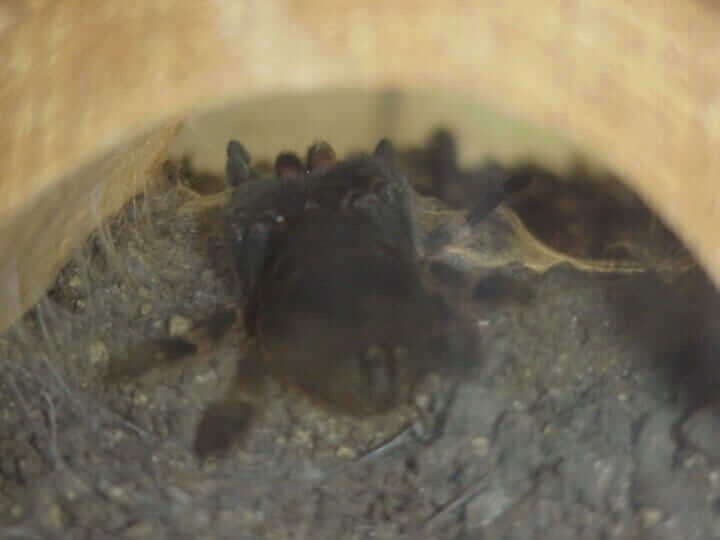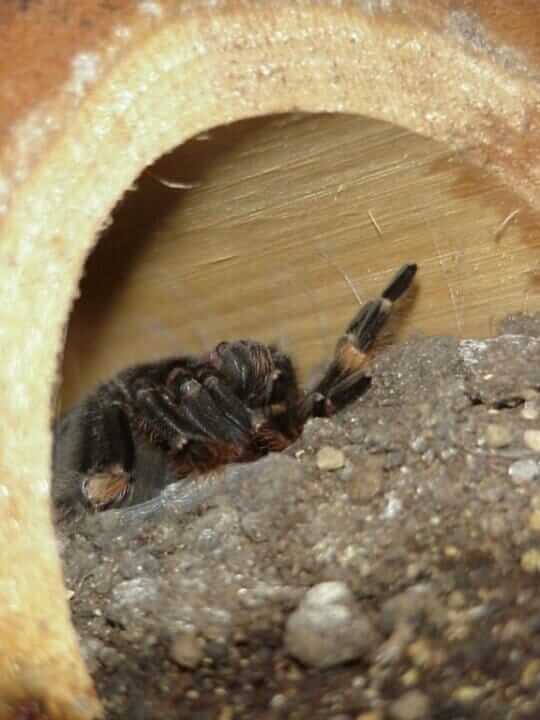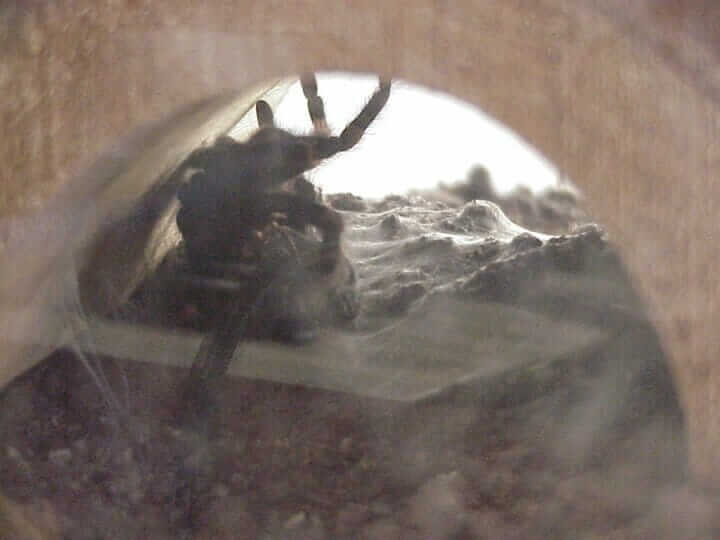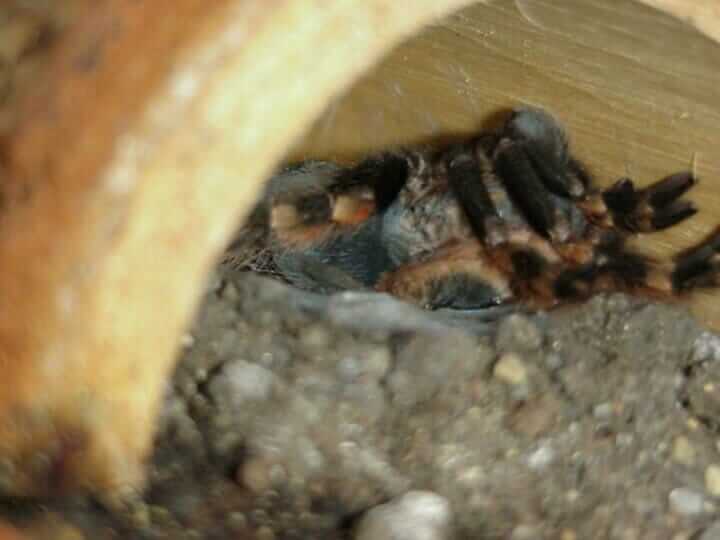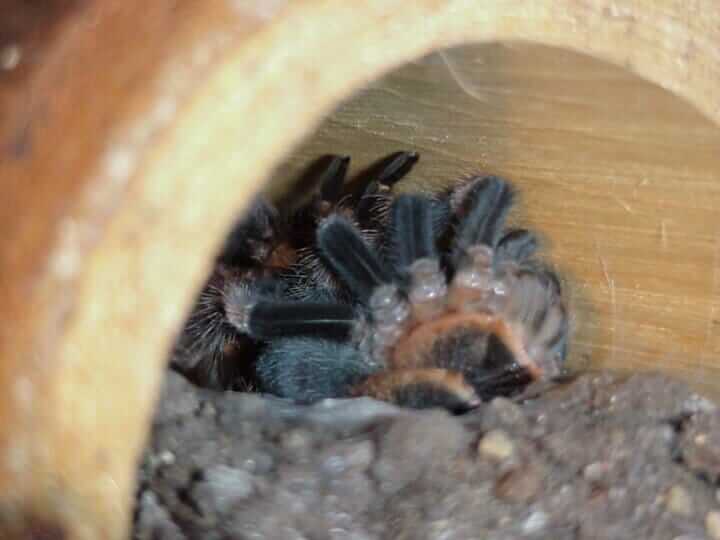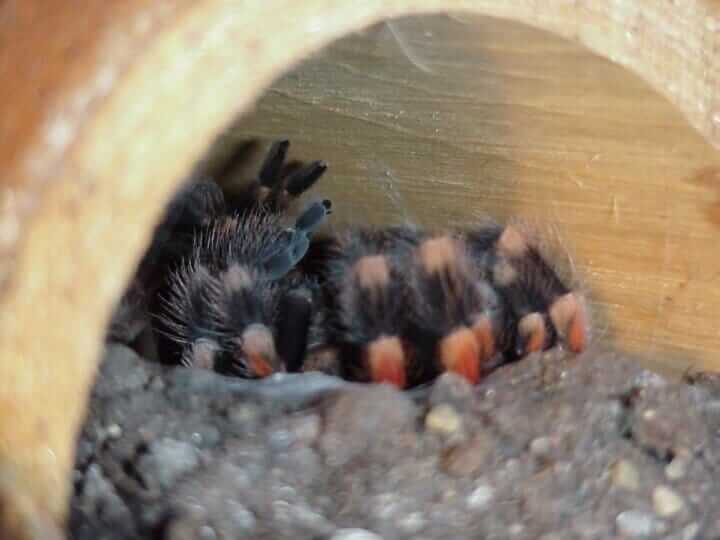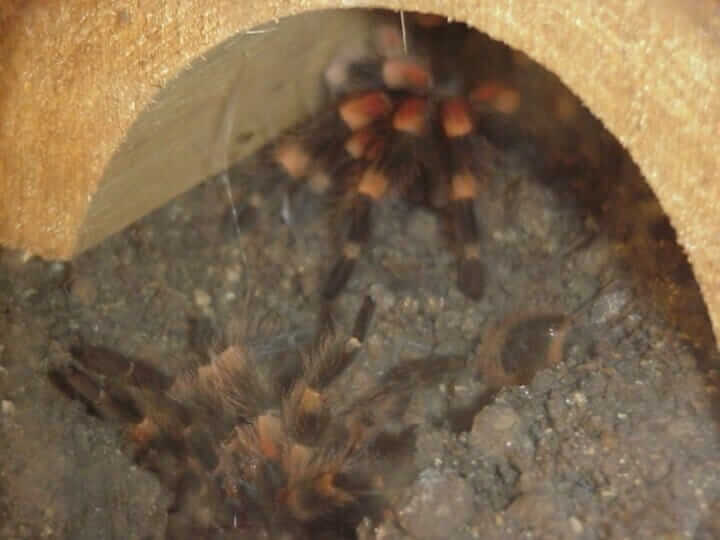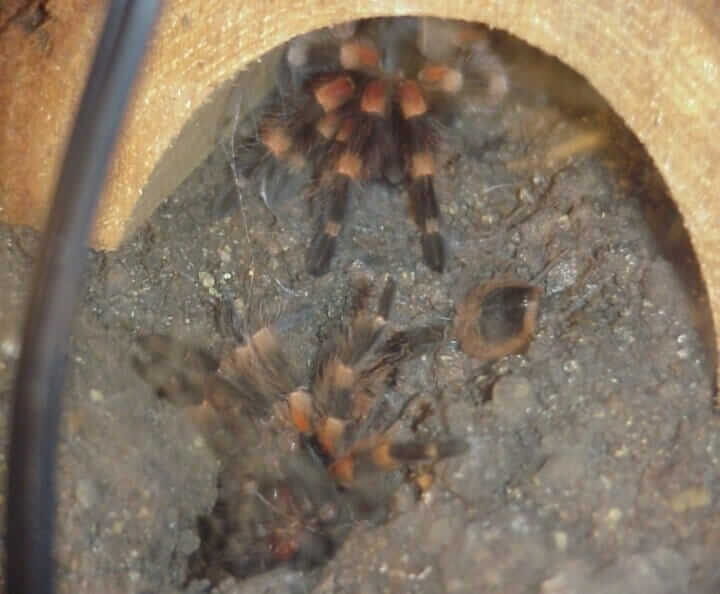WELCOME TO BLS0N'S TARANTULA MOLTING PAGE!
In order for spiders to grow, the have to
molt, or shed their exoskeleton. Tarantulas tend to stop eating a few
weeks before they molt. When they are ready to molt, they will spin a
thin web on the ground and then lie down on it. When I first saw Merbet
molting, I thought hewas dead. After carefully surveying the scene,
however, I decided that things looked too perfect for him to be dead.
His legs were extended (not curled like I usually see with dead spiders)
and the web underneath him was constructed in a very systematic manner —
(very smooth and even).
It is
imperative that you remove any uneaten food when your spider is molting.
The spider is immobile during the molting process, thus making him/her
vulnerable to attack from crickets and other types of live food. Also,
don’t poke at the spider during the molting process (or any time for
that matter!). Poking can disturb the molting process cause harm to the
tarantula.
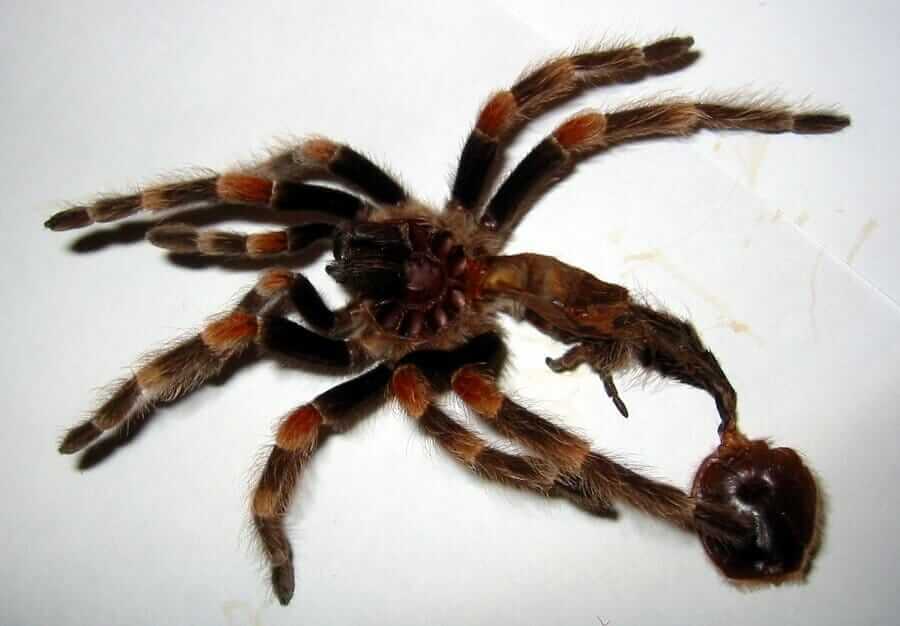
Merbet has molted five
times since I owned him, and the following pictures are from his first
molt. The molting process usually takes only about a day, but there is a
period of tanning, or hardening of the exoskeleton when the tarantula
finishes molting. Because of this, you should wait a week or more to
introduce food into the cage in order to allow this tanning period to
safely occur. It took around 7 hours from the time I saw Merbet on his
back until he started moving around, freeing himself from his previous
exoskeleton.
Below is a series of
pictures showing what happened during Merbet’s molt. Sadly, I backed up
pictures of Merbet’s second molt (which were amazing pictures compared
to these) on a defective hard drive, and now they are gone forever.
Hopefully he’ll molt again soon so I can update with better pictures! All
of the pictures on this page are property of Roamingcattle.com. If you
would like to use any of my pictures from this site, my molting site, or
my pictures site, please contact me
